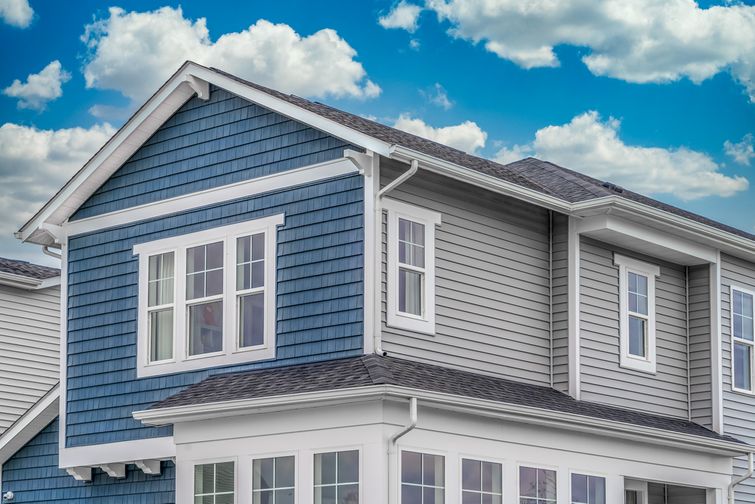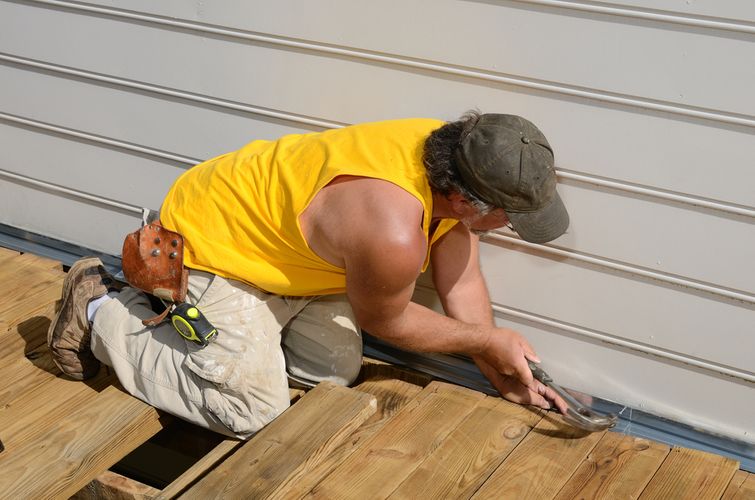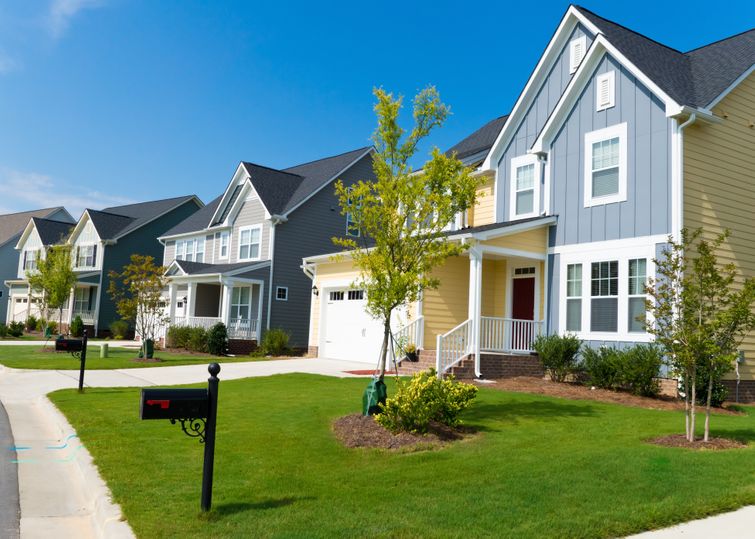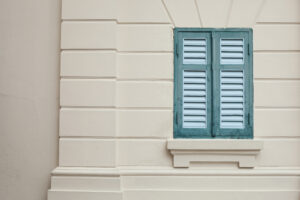Is your existing siding looking tired, out-dated and falling apart? It’s time for an upgrade.
Choosing new siding for your house can be a difficult decision. You want to select a siding that is weather-resistant, fade-resistant, low maintenance, affordable, and beautiful. Finding the perfect siding can be a tall order!
To help you find the best siding for your house, we will go over the siding options available to you. We discuss wood, natural stone, brick, stucco, fibre cement, and metal siding, including steel and aluminum. At the end of this blog post, you will have a better idea about which siding is your best bet.

When thinking of classic Muskoka cottages and cabins, the first exterior siding material that comes to mind is wood. Wood siding offers a stunning, natural wood grain appearance that everybody adores.
You can create your ideal home exterior with wood siding. From planks to shingles, cedar to red pine, there is a wide range of wood siding options available for installation.
While wood siding is beautiful, it requires more maintenance than the average siding and is flammable, which means in some residential applications it will not pass the fire-codes.
Real wood needs to be chalked, painted, or stained to prevent weather damage and maintain its durability.Maintenance is important for keeping your house protected and your siding in good shape.
It is not recommended to install wood products which require further treatments and coating for exterior applications, as homeowners will find that the increased cost and time consuming maintenance schedule is much too costly and inconvenient. These options are better suited for indoor applications.
However, these days exterior wood siding is available from manufacturers such as Maibec which come pre-treated so you do not have to apply any special coatings and are great, long lasting options which will last a life-time and require less maintenance.
When considering exterior wood siding options, we strongly recommend pre-treated options which come with long manufacturer warranties. In all cases, you will have to do a yearly inspection to keep an eye on undue weathering and critters.
If homeowners love the appearance of real wood but do not want to keep up with maintenance, and like the idea of using recycled materials and wood processing by-products, they can opt for engineered wood.
Engineered wood is made out of wood chips and resin. It offers all the beauty and warmth of solid wood but with extra durability and less maintenance. Engineered wood will last just as long but, unlike wood, it has less maintenance required, and insect are not invited.
Fibre cement siding is the chameleon of siding materials. It can take the shape of masonry, stucco, or natural wood siding, except it is made out of the wood pulp, Portland cement, fly ash, and water.
Not only will fibre cement boost your home’s curb appeal, but it will also boost its durability; fibre cement is very low maintenance, non-flammable, and termite resistant. It’s also affordable.
Fibre cement siding is the perfect siding option for those who would like durable material with very little maintenance, boosting of your property resale value and adherence to fire codes.

Vinyl siding has become one of the most popular siding materials in Canada thanks to its low cost, versatility, and minimal maintenance. But, now, many people are opting for other materials.
Vinyl siding has fallen from favouritism because some design professionals and homeowners dislike the “plastic look” of vinyl. Others are consciously choosing long-lasting, eco-friendly options—something that vinyl is not. It also offers no fire-resistance and is not suitable for many residential city walls which have neighbouring walls adjacent to them and do not pass fire codes.
Most vinyl siding manufacturers say that vinyl siding can last about up to 30-years. But, depending on the climate, vinyl can start to age earlier and crack on impact in low temperatures. The sun’s UV rays can fade vinyl’s colour, making your home’s exterior look tired and old. Painting is not a worthwhile option as the paint will crack, peel, and chip away until high winds, rain, and general wear and tear. As a result, siding needs to be thrown out and replaced.
Solid brick is a classic siding material that has been used for hundreds of years—and good reason. Brick is durable, timeless, and can generally last the life of your house.
Brick siding is made from fired clay and comes in a variety of textures and sizes so you will never be limited in terms of design. However, brick installation is much different than siding installation and will need to be installed by a specialized team.
A downside of brick is lack of style options.
Stucco siding is made from building sand, Portland cement, lime, and water. It is installed over a waterproof paper barrier and galvanized metal screens on top of a house’s wood walls. Nowadays, the mixed stucco is applied over rigid insulation which is an efficient way to increase a building’s R-Value, and the barrier is applied by technique not unlike mudding drywall.
As more homeowners pull inspiration from architectural styles around the world, stucco becomes more popular. Homeowners looking to incorporate a Mediterranean or Spanish architectural style into their homes should use stucco.
A downside of stucco tends to be subject to cracks, maintenance and shorter life span that other materials.
Natural stone is a beautiful option for any house, but it is among the most expensive options. Homeowners looking for the beauty and durability of stone siding can opt for stone veneer.
Stone veneer is lighter and less expensive because it is made out of a mixture of natural and synthetic materials. Yet, it comes in a wide range of styles that look and feel just like real stone.

Architectural Aluminum siding is made out of heavy-duty, architectural-grade aluminum alloy. It is a durable, long-lasting type of siding that can protect your home from nearly every threat possible. Most of the best and most beautiful premium wood-grade options are found in this class of siding.
There are also aluminum siding products that are not made of alloy, but sheets of aluminum that are significantly thicker than the low-grade options. These options therefore look better, are available in wood grains, help avoid the risk of oil canning, and cost less than architectural grade aluminum siding.
Steel siding is modern, environmentally friendly, and sustainable siding. Steel offers much of the same durability as aluminum at lower costs, and grades of thickness and profiles that cannot be obtained with aluminum. It is damage, fire, and pest resistant. Although steel is subject to oxidation and rust, thanks to the current manufacturing and pre-painting process of steel siding panels, rusting has become a non-issue for conventional siding purposes.


